

Shoes & Pattens
The choice of medeival and renaissance shoes is a very personal one. This is a tiny sample of choices. I cannot list every style in every weight and in every color from every period. These are some of the more popular styles, including pattens. Turnshoes and poulaines are available, e-mail me if you're interested. All footwear is made in America in my shop. All standard footwear now made in 6-8 ounce bullhide. It is very soft and very tough. You'll love it (there are other/more options for turnshoes and boots). All costume reconstruction footwear is now EH Line (Just hit it!). The price for all footwear other than those listed as turned includes your choice of leather or rubber soles. A small heel is available for an extra $20.00. Reproduction turnshoes and boots are still entirely stitched by hand.
If you want something specific and you can describe it or even better, you have a picture or a drawing, let me know and I'll quote you a price and delivery time. If you saw it in a book, let me know that too. I probably have it and if I don't, I'll get it. Leather will vary slightly from the colors listed and being a natural product will sometimes have range marks and surface variations. Click on the thumbnail for more information, prices and descriptions. You can see my work queue here. Care and feeding instructions at the bottom of this page.
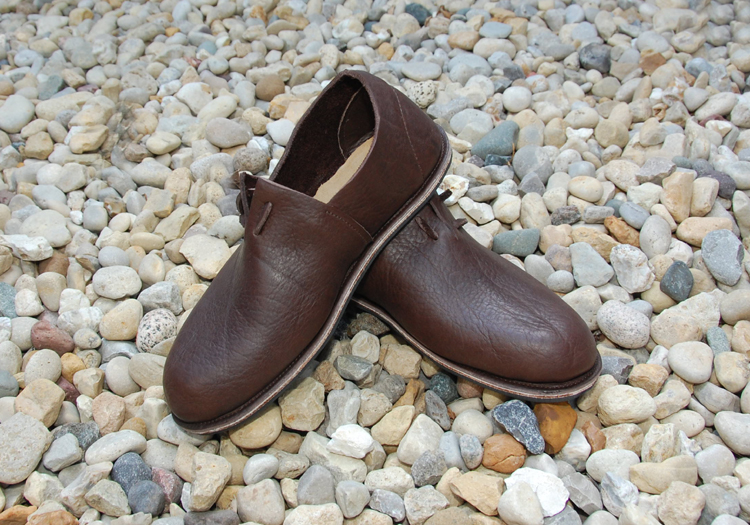 Simple Round Toe |
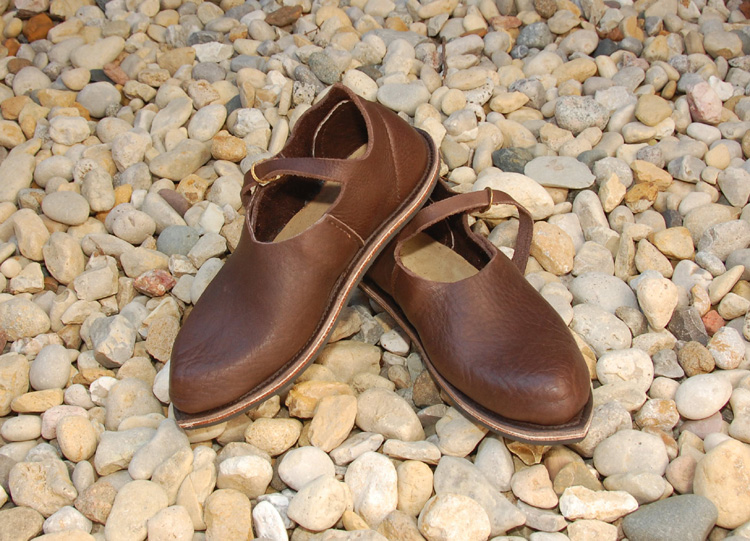 Simple Pointed Toe |
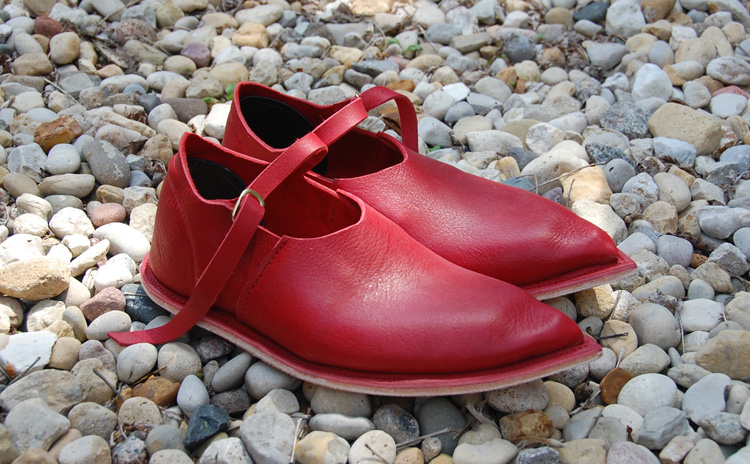 Extended Toe |
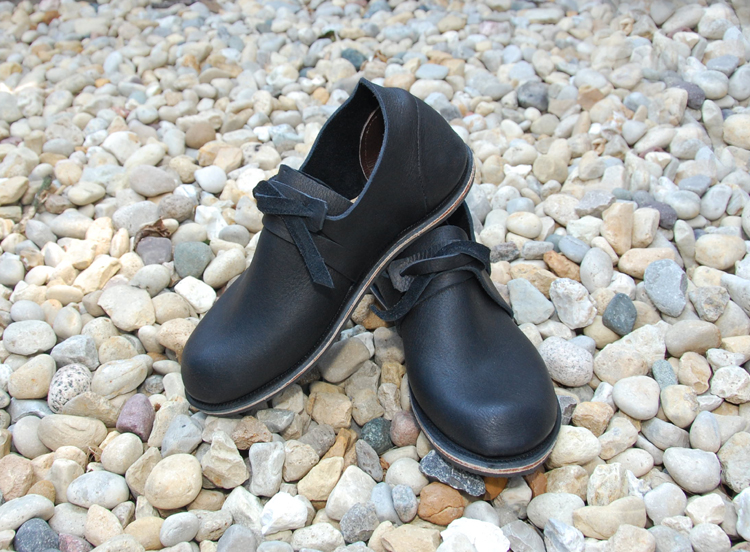 Latchet |
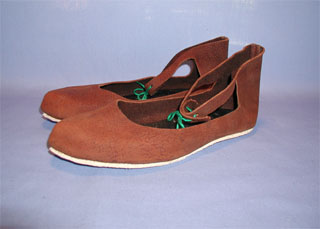 Ankle Latchet |
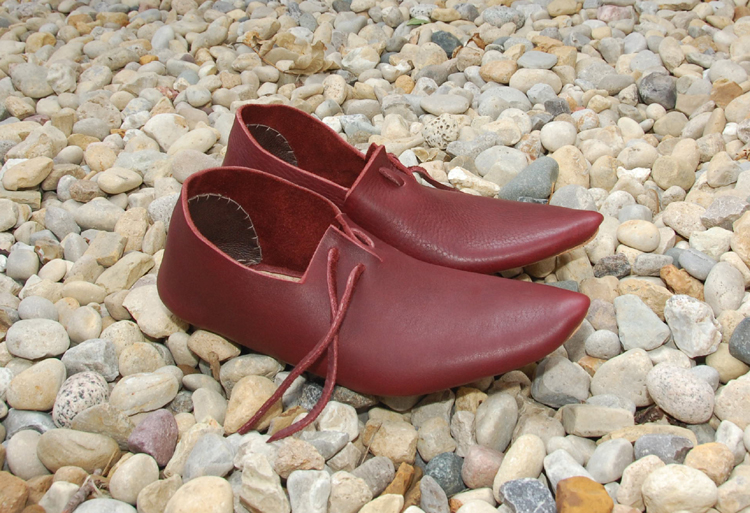 Turnshoe |
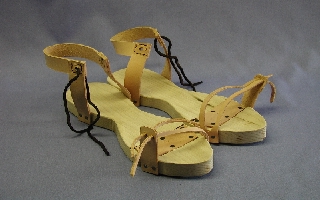 Wooden, Hinged Pattens |
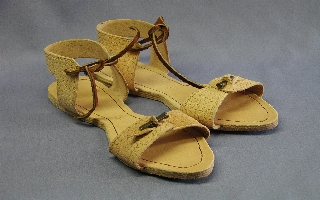 Leather Pattens |
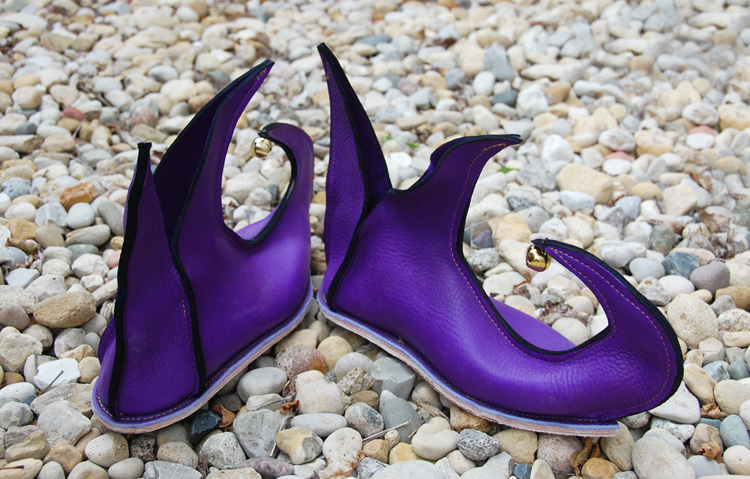 Foolish Shoes |
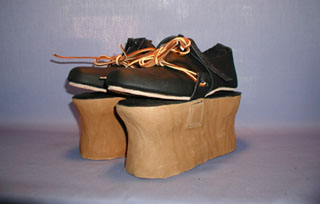 Chopines |
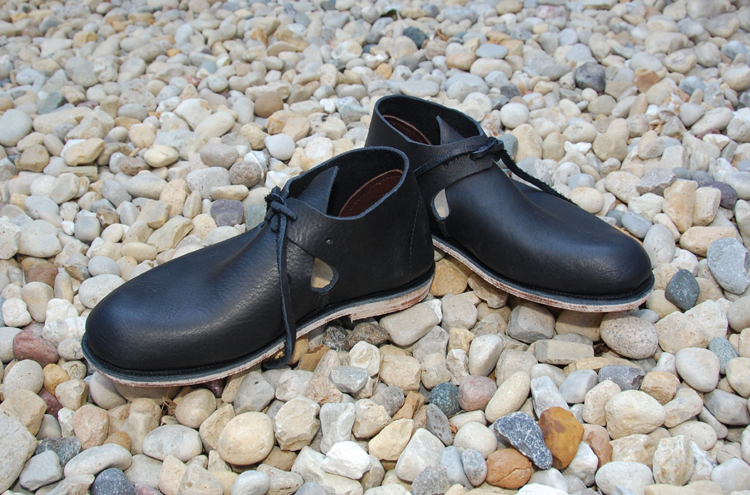 Hybrid Latchet |
 Tudor |
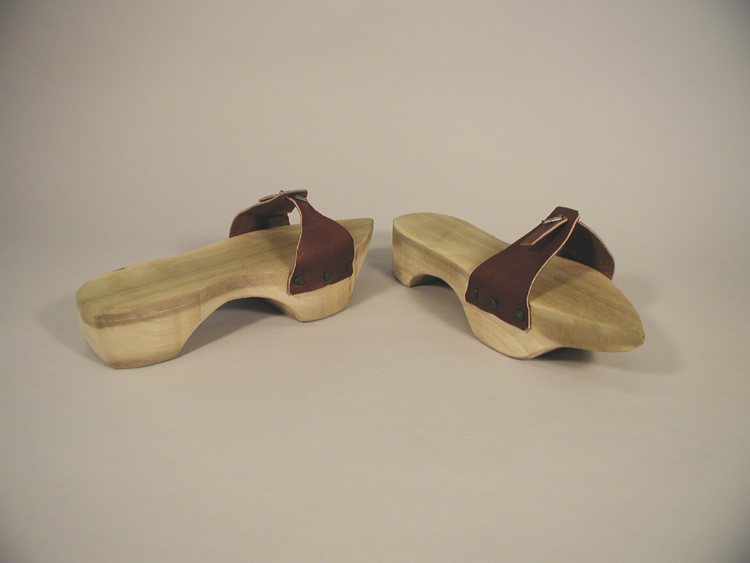 15th c. patten |
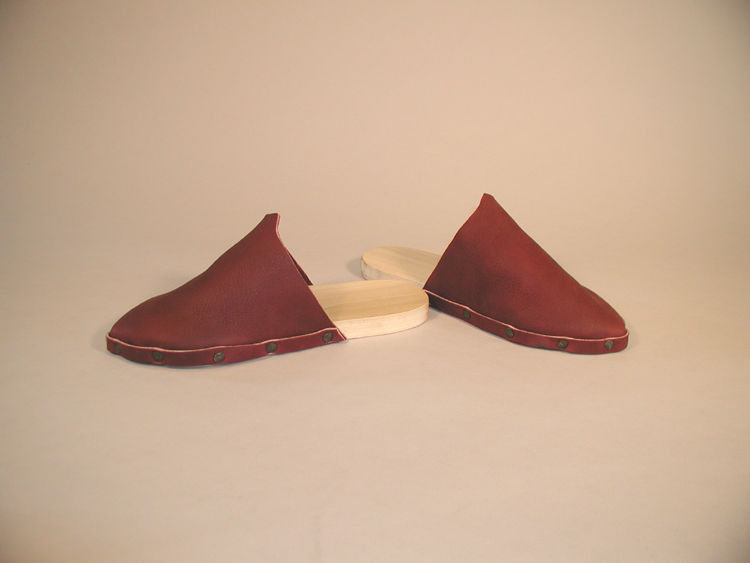 Overshoe |
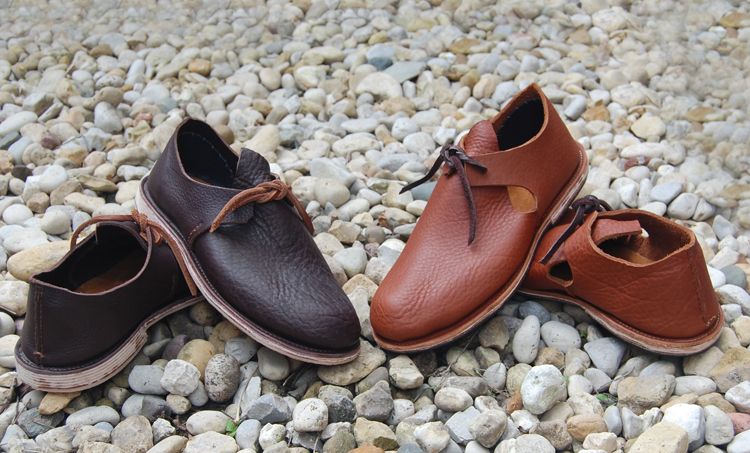 Plantation |
Armour Shoes and PattensBoots Forgework Leather Items
Leather Colors Order Forms Links and Photos Home
Armlann care and feeding sheet for leather goods
Shoes or Boots: You should care for your new shoes or boots as you would a modern pair. Clean them after use and store them dry, dry, dry. Moisture will rot them very quickly. Put them away dry and in a place that they can breathe, not in an airtight, plastic bag.
If they are dusty, just wipe off the dirt. Use saddle soap to clean a very dirty shoe. After cleaning, you'll want to treat them in order to keep them supple. I suggest mink oil. Mink oil provides an added element of water repellency and will keep them very soft. Mink oil [or any other oil] will darken the item slightly. Use neutral shoe polish if you want to maintain the color.
If you they get moldy, vinegar is your solution (I use distilled white vinegar). Wipe them down and work the vinegar into seams. You can use bleach wipes on leather soles. Wipe dry. Leave them in the sun to get dry, dry, dry. Apply a leather oil or conditioner. As above, I suggest mink oil.
Use a suede brush if you have suede leather. Brush them clean and store them dry. Modern shoetrees will be too much for them but you should try to keep their shape by stuffing them when stored. This is especially true for square toes.
Any decent shoe repair shop should be able to replace soles and heels. If you cannot find this service in your area, I can do it for a nominal fee.
Drinking Vessels: I line my vessels with brewer's pitch, a natural pine-tar resin. The body of the item contains beeswax. The hot, direct sun is their enemy. Treat them as you would fine crystal. If you sit on them, they will crush. Store it on top.
To clean them, wash them by hand with warm, soapy water and rinse with warm or cold water, no abrasive pads. Do not put them in the dishwasher. They will not tolerate boiling water. Only put in it liquids that are at a comfortable drinking temperature.
Enjoy your new leather!